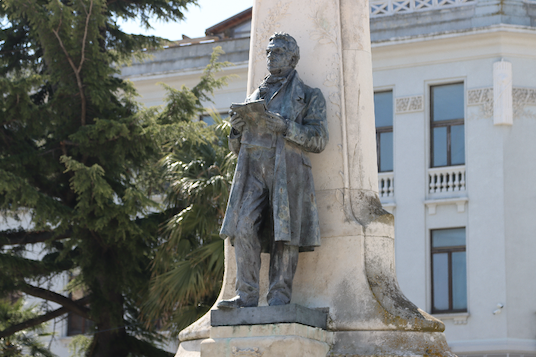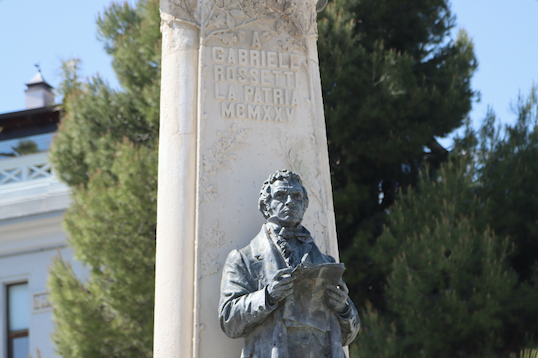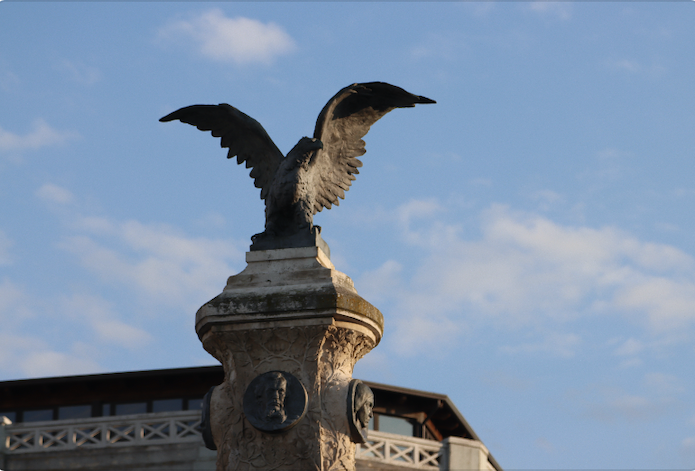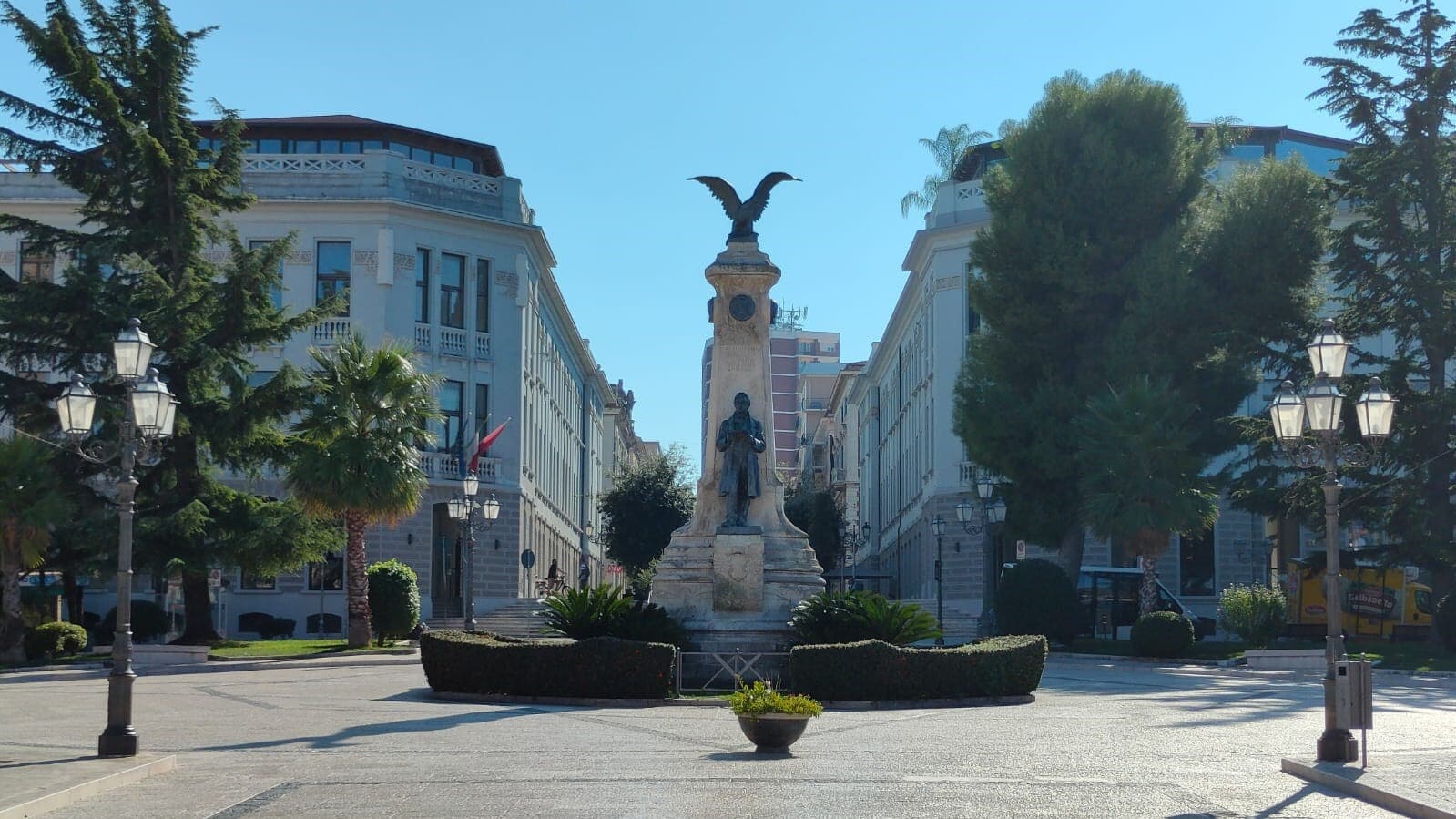The monument to Gabriele Rossetti
The many mysteries of the monument to the poet who is NOT portrayed in the statue dedicated to him
The monument to the poet Gabriele Rossetti in the center of the eponymous square is undoubtedly the centerpiece of Vasto. However, until a hundred years ago, this was a peripheral place, namely the open space outside the walls that replaced the Roman amphitheater and was used for periodic livestock fairs. Moreover, if you ask any resident of Vasto who is depicted in the statue, everyone will know the answer, but very few will remember the title of one of his works.
There are very specific historical and cultural reasons behind this peculiar situation. Until the early 1900s, the square was called “Spianata del Castello” and was located in front of the Castello Caldoresco’s gate, the entrance to the city next to the castle, which was later incorporated into the Palazzo Palmieri, still visible on the northern facade. With the expansion of the urban center beyond the walls and, above all, with the creation of the Adriatic State Road that connected Trieste to Otranto, passing right through the center of Vasto, known today as Corso Garibaldi, the adjacent open space became the junction between the old and new city.
During the early years of the fascist regime, it was believed that the new center of Vasto should have a monumental and martial appearance. On the occasion of the completion of the Sinello Aqueduct, a large fountain was created, and the square was embellished with flowerbeds, linked to a system of wide avenues leading from Villa Principe di Piemonte (now Villa Comunale) to the Palazzo d’Avalos.




To name the square, the monument to Gabriele Rossetti was placed at its center. Although he died in exile and poverty in London in 1854, he had become one of the symbols of the Italian Risorgimento due to his membership in the Carboneria, his studies on Dante, his fight against the Bourbons (he had sought refuge in London because he was condemned to death following the uprisings of 1821), and also due to his anti-clerical spirit. In London, Gabriele Rossetti had converted to Evangelism and had also produced several works criticizing the Roman Church.
It was decided to finally create the long-awaited statue, and the Neapolitan sculptor Cifariello was commissioned to portray Gabriele Rossetti dressed in late 19th-century attire, reading the Divine Comedy, with an eagle ready to take flight above his head, and completed with medallions of his two sons and two daughters, most of whom had become renowned poets or painters in England. The bronze works were placed on a stone stele from Gioia del Colle, with a bas-relief carving of Dante’s profile on the back.
The bronze works were placed on a stone stele from Gioia del Colle, and on its back, a bas-relief carving of Dante’s profile was sculpted. The entire complex (monument, square, and fountain) was inaugurated by His Royal Highness, Prince Umberto di Savoia, on September 12, 1926.
Three years later, the fascist regime signed the Lateran Pacts, and the Catholic religion returned to being the state religion. Due to his anti-clericalism, Rossetti was removed from all Italian anthologies and practically forgotten. In Vasto, his name remained in the toponymy of many places, as well as in the statue that was meant to represent his likeness. However, when compared to portraits made by several painter friends during his lifetime, the statue shows absolutely no resemblance.
The monument to Gabriele Rossetti is in our itinerary:
ISTONIO LIBERTY AND LITTORIA
The proposed stages:
- Cattedrale di San Giuseppe
- Corso de Parma
- Piazza Rossetti
- Corso Nuova Italia
- Villa Comunale


